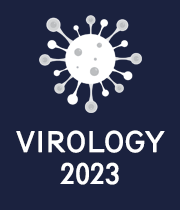Title : An innovative in vitro system to replace in vivo experiments for rabies diagnostic interlaboratory trials a sustainable application of the 3Rs principle
Abstract:
Post-mortem laboratory diagnosis of rabies is based on methods for detecting viral antigens, viable virus or viral nucleic acids with the current reference and gold standard technique, the Direct Fluorescent Antibody Test (DFA). Interlaboratory trials (ILTs) for rabies diagnosis are organized to assess the diagnostic capacity of participating laboratories, the interlaboratory variability of results and the diagnostic methods in use. The samples included in the ILT panel are usually produced by the intracerebral inoculation of mice, meaning that thousands of animals are sacrificed every year. Distress, pain and severe suffering are a natural consequence of the virus inoculation procedure and, particularly, of the experimental endpoint represented by overt nervous symptoms of rabies infection. The aim of the present work is to validate a sustainable in vitro system to replace in vivo experiments for preparing rabies positive samples for proficiency test (PT) exercise. The innovative in vitro technique is based on the in vitro replication of rabies virus, the collection and quantification of infected cells and the dilution of this material in field brain tissue previously tested negative for rabies. As currently done for samples prepared with mouse brain, cell-based samples are then lyophilized to better preserve proteins and nucleic acids. This in vitro method was first developed using the fixed rabies virus strain CVS-11 and then adapted to several African strains belonging to different lineages (Africa 2, Africa 3, Cosmopolitan). To this purpose, rabies viral strains previously isolated from field samples were adapted to cell culture through serial cell passages. The in vitro growth conditions were optimized to maximize the yield of the virus produced and the percentage of infected cells obtained. The infected cells/brain tissue ratios necessary to simulate samples with different degrees of positivity were also experimentally defined. All samples prepared by cell-based methods were successfully analysed by major rabies diagnostic techniques, including DFA, virus isolation in cell culture, real time RT-PCR and end point RT-PCR. To validate the in vitro method of preparation of PT panels, homogeneity and stability tests were also performed up to two months after samples preparation, in accordance with international guidelines (ISO/IEC 17043 e ISO 13528).
A pilot interlaboratory trial is currently being organized; a panel prepared through the innovative in vitro system will be sent together with a panel prepared by the standard in vivo method. Both panels will be analysed by 26 laboratories participating on a voluntary basis to the proficiency test 2022 for the diagnosis of animal rabies, organized by the FAO and National Reference Centre for rabies at the Istituto Zooprofilattico Sperimentale delle Venezie (Italy). The in vitro and in vivo samples will be blind-coded and analysed by DFA and/or RT-PCR, at the discretion of the participating laboratory. Statistical analysis of results from testing both sample panels will be performed in May 2022 and will highlight any significant differences between the two production methods. This interlaboratory exercise will be used to definitively validate the in vitro system for producing rabies positive samples.
What will audience learn from your presentation?
- The introduction of an in vitro system to prepare samples for interlaboratory proficiency exercises for rabies diagnosis represents a significant improvement of animal welfare and a novel implementation of the Three Rs principle (Replacement, Reduction and Refinement), the ethical oversight of scientific animal care and use worldwide.
- The present work provides the proof of principle that a complete replacement of animals currently used for preparation of rabies positive samples is actually possible thanks to the newly developed method based on dilution of rabies-infected cells in field brain material.
- The innovative in vitro method is absolutely sustainable as no laboratory animals are required for the production of rabies positive material, while uninfected samples are usually available in large amounts in regions where effective surveillance plans for rabies are applied in the field. Thus, this method can be adopted by all reference centers that regularly organize proficiency tests for rabies diagnosis, avoiding the experimental infection and sacrifice of thousands of mice every year and reducing the risks for operators.


